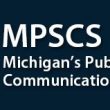SDR Forum to demo Java version of software specification
The Software Defined Radio (SDR) Forum plans to demonstrate a Java version of the Software Communications Architecture (SCA)—a set of specifications that govern the interaction of hardware and software components in a SDR and control the radio’s functions—at its technical conference to be held in Phoenix Nov. 15-17.
The SCA was developed by the U.S. Department of Defense via its Joint Tactical Radio Systems (JTRS) program to ensure that SDRs manufactured by different companies would be able to communicate with each other. The JTRS program was created to help the military migrate from its current radio systems to SDRs.
Java versions of SDRs are lighter and more portable because the Java language requires less machine resources than does the “more cumbersome” CORBA (Common Object Request Broker Architecture) language currently being considered by the military, said Allan Margulies, SDR Forum CEO.
The first version of the SCA was developed jointly by the SDR Forum and the Canada Research Centre in 2002 and has since been downloaded more than 7000 times, according to Margulies, who predicted the Java version—the second iteration—eventually will be certified by the JTRS service office.
In other news, the SDR Forum’s public-safety special interest group (SIG) plans to issue a request for information seeking specific ideas regarding how software-defined radio technology can meet public-safety requirements. Of specific interest are the requirements of the U.S. Department of Homeland Security, as well as Project MESA, which is working to develop international specifications for advanced mobile broadband communications for public safety.
“We want vendors to tell us how software-defined radio technologies can meet these requirements down the road,” said Fred Frantz, SDR Forum member and director of law-enforcement communications for L3 Communications Government Services. For example, The SDR Forum hopes to learn whether alternatives to CORBA that would still meet public-safety requirements exist or could be developed.
“The military has invested a significant amount of money into an SCA architecture that’s based on CORBA, but one of the open questions is to what extent does that makes sense for public safety,” Frantz said.
He added that informal discussions thus far have yielded only “a lot of opinions.”
“We’re hoping that the experts in the field will give us thoughtful perspectives on this issue,” Frantz said. “Some of the capabilities being developed might be more than what public safety needs and could be quite costly, not just in terms of equipment costs but also operating costs.”
Frantz said the RFI would be issued towards the end of August, and would “most likely” remain open for 45 days. The SDR Forum hopes to release a report based on the feedback “sometime in early 2005.”

















